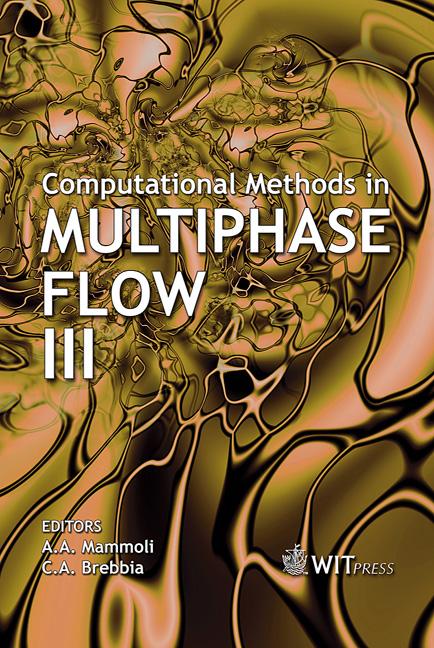Primary Break-up: DNS Of Liquid Jet To Improve Atomization Modelling
Price
Free (open access)
Transaction
Volume
50
Pages
10
Published
2005
Size
531 kb
Paper DOI
10.2495/MPF050311
Copyright
WIT Press
Author(s)
T. M´enard, P. A. Beau, S. Tanguy, F. X. Demoulin & A. Berlemont
Abstract
Prim ary break-up: DNS of liquid jet to improve atomization m odelling T. M´enard, P. A. Beau, S. Tanguy, F. X. Demoulin & A. Berlemont CNRS-UMR6614-CORIA, Rouen University, France Abstract Two different approaches for numerical simulations of primary break-up of liquid jet are described. In the ELSA model (Eulerian Lagrangian Spray Atomization) the liquid and the gas are considered as two species of a same mixture, but without necessarily the same velocity. The drift velocity and the liquid mass dispersion are exactly related to the turbulent liquid mass flux. To describe the topology of the spray the liquid/gas interface density per unit of volume is used instead of the droplet diameter that has no meaning in the dense part of the spray. To establish definitely the model for the turbulent liquid mass flux and for the liquid/gas interface density equation, DNS simulations are carried out to obtain information in the dense zone of the spray where nearly no experimental data are available. Interface tracking is ensured by the Level SetMethod and the Ghost Fluid Method (GFM) is used to capture accurately sharp discontinuities for pressure, density and viscosity. Coupling between the Level Set and VOF method is used for mass conservation. Fluid motion is predicted with a projection method for incompressible flows. Keywords: Level Set, Ghost Fluid Method, VOF, DNS, atomization modelling, liquid jet. 1 Introduction Extensive studies have been devoted to the transport of spray of droplets, but the atomization process remains a challenging topic of research. It clearly appears that specific approaches must be developed when it is necessary to describe interface behavior. In recent years a number of studies have been proposed for the modelling and numerical simulation of moving interfaces. Two approaches are described in this paper. Vallet et al [1] proposed a new approach that permits to compute all the atomization process and that included the primary break-up zone: the ELSA
Keywords
Level Set, Ghost Fluid Method, VOF, DNS, atomization modelling, liquid jet.





